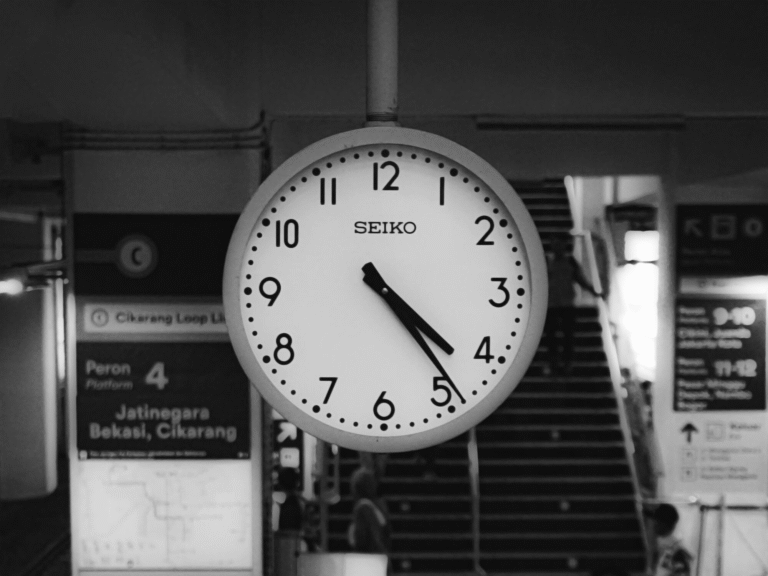How Sudden Vehicle Malfunctions Cause Rear-End Crashes
You’re sitting at a stoplight, checking the cross-traffic, when you feel it – a violent slam from behind, the sound of crunching metal, and that split-second confusion where your brain tries to understand what just happened.
Most people think rear-end crashes are always caused by “distracted drivers” or someone “following too closely.” That’s often true – but not always. In many cases, the root problem is a sudden vehicle malfunction: failed brakes, worn tires, dead brake lights, or a steering issue that turns the driver into a passenger in their own car.
When that happens, figuring out who is actually responsible becomes more complicated – and that’s exactly where an experienced rear-end car accident lawyer near me becomes critical.
How Mechanical Failures Trigger Rear-End Crashes
1. Brake Failure – The Classic “I Couldn’t Stop” Scenario
Modern braking systems are designed with backups, but they can still fail. Common issues include:
- Worn brake pads and rotors
- Leaking brake fluid or damaged lines
- Faulty ABS (anti-lock braking system) components
- Overheating brakes on long downhill stretches
When brakes fail, the driver behind you may have almost no time or distance to react. But that doesn’t automatically excuse them from fault. The key question becomes:
- Was the brake failure sudden and unforeseeable, or
- Did the driver (or a mechanic, or a company) ignore warning signs?
If maintenance was neglected, that’s negligence – and it can shift fault back onto the driver or even a repair shop or fleet owner.
2. Tire Blowouts and Bald Tires
A rear-end crash can also start with a tire problem:
- A blowout that sends a vehicle lurching forward uncontrollably
- Bald tires that can’t grip the road in rain, leading to skidding and sliding
- Mismatched or improperly inflated tires that alter braking performance
In heavy traffic, a driver with worn or defective tires may slam into the vehicle ahead during a sudden slowdown. Again, the legal question becomes whether the condition of those tires was something a responsible driver – or a fleet company – should have taken care of long before the crash.
3. Steering and Suspension Problems
Steering or suspension issues can cause:
- Delayed response when trying to slow or change lanes
- Swerving into another lane and then overcorrecting
- Longer stopping distances or “nose-diving” when braking
A driver who loses control because of a steering defect might rear-end the car in front or push one vehicle into another in a chain reaction. If those parts failed because of a design or manufacturing defect, a product liability claim may come into play – something a seasoned rear-end collision attorney can help untangle.
4. Faulty Brake Lights and Electrical Issues
One of the most overlooked causes of rear-end crashes is bad or non-working brake lights. If the vehicle in front hits the brakes, but the lights don’t illuminate, the driver behind may not have a real chance to slow down in time.
Electrical problems can also cause:
- Flickering lights
- Turn signals that don’t work
- Hazard lights that fail during a breakdown
In those cases, fault may be shared: the following driver still has a duty to keep a safe distance, but the driver with inoperative brake lights also had a duty to keep their vehicle reasonably safe and roadworthy.
Who Can Be Held Responsible After a Malfunction-Related Rear-End Crash?
This is where a simple “rear-end accident” turns into a more complex investigation. A rear-end accident lawyer won’t just assume it was “the guy in back.” Instead, they look at all possible sources of negligence, including:
- The driver – for ignoring warning lights, strange noises, or obvious maintenance issues
- The vehicle owner or fleet company – for skipping inspections, cutting corners on repairs, or pushing unsafe vehicles back on the road
- A repair shop or mechanic – if critical work was done poorly or important problems were missed
- The vehicle manufacturer or parts maker – if a defective part caused the failure
When multiple parties share fault, it opens more potential paths to compensation – but also makes the case more technical. That’s why searching for a “rear-end car accident lawyer near me” isn’t just about proximity. It’s about finding someone who understands how to prove mechanical failure and negligence using experts, records, and hard evidence.
What Evidence Helps Prove a Vehicle Malfunction Caused the Crash?
If you suspect a sudden malfunction played a role in your rear-end crash, preserving evidence early can make a major difference. An experienced rear-end accident attorney will often move quickly to secure:
- The vehicles themselves – before they’re repaired, sold, or destroyed
- Maintenance records and inspection logs
- Repair invoices and prior complaints about the vehicle
- Data from onboard systems (event data recorders, telematics, fleet tracking)
- Manufacturer recalls or technical service bulletins related to brakes, tires, or other components
Witness statements and photos of skid marks (or the absence of them), fluid leaks, or tire condition can also help reconstruct what really happened.
Why Rear-End Crashes Involving Mechanical Failures Are Not “Simple Cases”
Insurance companies like to treat rear-end crashes as routine. When mechanical failure is involved, they may:
- Blame everything on the driver in back, even if a defect played a role
- Claim the failure was “unforeseeable” to avoid paying for negligent maintenance
- Suggest that you “weren’t really hurt” because the crash happened at lower speed
That’s where a rear-end car accident attorney becomes not just helpful, but necessary. Your lawyer’s job is to:
- Identify all potentially responsible parties
- Work with accident reconstruction experts and mechanical engineers
- Prove how the failure happened and why it wasn’t just “bad luck”
- Document the full extent of your injuries, lost wages, and long-term impact
You should not be left fighting technical arguments and pointing fingers between companies while you’re trying to recover from whiplash, back injuries, concussion, or chronic pain.
When You Should Talk to a Rear-End Car Accident Lawyer Near You
It’s worth reaching out to a lawyer if:
- The driver who hit you blames “brake failure” or a sudden malfunction
- You suspect the other vehicle was poorly maintained or obviously unsafe
- The crash involved a company vehicle, delivery van, rideshare car, or commercial truck
- The insurance company is already suggesting that “no one is really at fault” because of a mechanical issue
A local rear-end car accident lawyer near me understands how courts in your area handle these cases, what kinds of experts are persuasive, and which arguments insurers use to reduce or deny claims.
Talk to Bojat Law Group About a Rear-End Crash Involving a Vehicle Malfunction
If a rear-end collision has turned your life upside down – and especially if there are questions about brake failure, tire problems, or other mechanical issues – you don’t have to sort it out alone.
Bojat Law Group represents injured people in complex rear-end collision cases across California, including crashes involving defective parts, careless maintenance, and unsafe fleet practices. Our team investigates beyond the police report, works with trusted experts, and focuses on building a clear, evidence-based story about what really caused your injuries.
You pay nothing upfront and no legal fee unless we win compensation for you.
If you’re searching for a rear-end car accident lawyer near me, call (818) 877-4878 for a free, confidential consultation. Let us review what happened, explain your options, and help you decide on the next steps.







